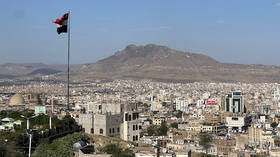Battle of the bulge: US food corporations fueling obesity epidemic with addictive ingredients
By 2030, more than half of Americans could be obese, taxing the nation’s health while costing the country $500 billion in lost economic productivity. The food industry, however, is doing its best to keep the public hooked – no matter what the price.
With one out of three adults clinically obese and 40 percent of
children officially overweight, the US is the fattest country in
the developed world. The burgeoning public health crisis will see
instances of diabetes, heart disease, stroke and cancer skyrocket
over the next two decades, taking an already strained healthcare
system to breaking point.
But with food manufacturers keen on keeping customers loyal while
maximizing their profits, public health concerns are likely to be
dwarfed by the bottom line.
“What these food scientists have done is that they’ve gone to a
lab and they’ve created these chemical concoctions that are very
sweet, very fatty and very salty. And they call that the bliss
point. Meaning they’ve created addictive foods that are going to
get consumers hooked and they’re going to keep wanting to come
back for more and more foods,” Elizabeth Kucinich, of
Physicians Committee For Responsible Medicine, told RT.
And while critics might also point toward issues of self-control,
the foods which are least healthy are also the cheapest, although
this reality is more a failure of government policy than an
inevitability.
In 1980, no one had even heard of high-fructose corn syrup. But
agricultural subsidies highly distorted market prices, bringing
about the rise of cheap corn, which is a staple of highly
processed foods like soft drinks and much of what one finds on
the supermarket shelves.
Between 1985 and 2010, the price of beverages sweetened with
high-fructose corn syrup fell 24 percent in real terms, with
American children consuming on average an extra 130 calories
daily from soft drinks.
If that wasn’t bad enough, a 2010 Princeton University study
found that rats with access to high-fructose corn syrup gained
substantially more weight than those with access to table sugar,
even if their overall caloric intake was equal.
However, a plan by New York City Mayor Michael Bloomberg to limit
soda drinking cups to 16 ounces, for example, was met with
derision, even when the public health benefits of such a ban were
obvious.
And it’s not just corn. Casein, a milk protein commonly used in
processed foods, also has addictive qualities that lead to
overeating.
“Milk protein… casein, when it breaks down in our digestive
system, turns into casomorphin, [which] is relative to morphine –
the drug,” Kenneth Kendrick, a whistleblower and food safety
advocate, told RT. “It gives us a little stimulation in our
brain and gives us a little bit of pleasure.”
Kendrik said the reason why food in the US is both addictive and
laden with fat, sugar and salt is simple.
“In one word, I would say: greed. We obviously are putting
money above public health,” he said. “Just like with cigarettes,
we want to keep people addicted. I equate it to what the
cigarette industry did. They deliberately wanted to put things in
that were addictive because that drives sales and will continue
to drive generations of sales.”
But as savvy and unrestrained marketing campaigns allow
corporations full rein to market their products to the US public,
the defeat of California’s Proposition 37, which would have
required the labeling of all food products containing genetically
modified organisms, proves that they want full control over the
narrative about what US consumers are putting into their bodies.
"While European countries require genetically modified foods
to be labelled, in the US the biotech industry and corporations
like Pepsi Co. and Coca Cola spent millions last year to defeat
the California ballot initiative for GMO genetically modified
organism labeling,” Kucinich said.
It is this perfect storm of labeling control, addictive food
additives and shockingly effective marketing that has America on
course for an epidemic of monumental proportions.














